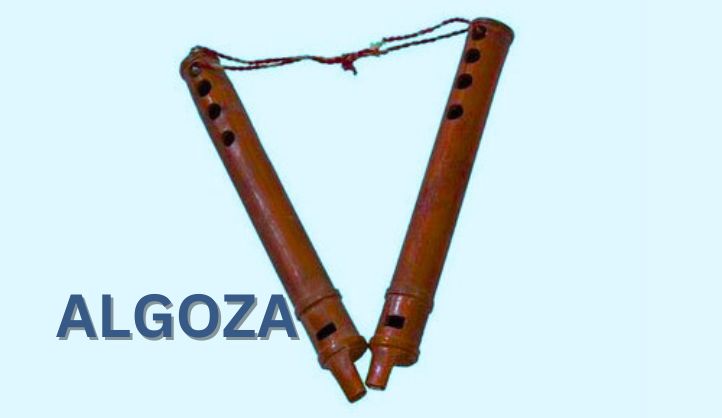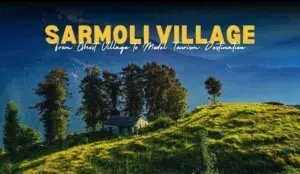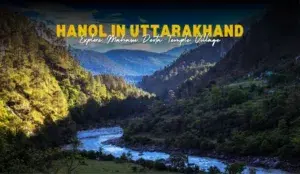In the heart of the Himalayas, Uttarakhand boasts a rich cultural heritage that is reflected in its music, dance, and traditions. Among the various musical instruments that form the backbone of Uttarakhand’s folk music is the Algoza, a fascinating wind instrument with a distinctive sound and playing technique. This blog delves into the history, cultural significance, and unique features of the Algoza, offering a glimpse into its enduring legacy in the musical traditions of Uttarakhand.
The Instrument
The Algoza, also known as the Jorhi or Do Nali, is a double-flute instrument played simultaneously. It consists of two flutes of equal length but with different thicknesses, creating a blend of melody and drone. Typically made of bamboo, the Algoza has a series of finger holes on each flute that allow the player to produce a variety of notes and harmonies.
Historical Roots
The origins of the Algoza can be traced back to ancient folk traditions in North India. It has been an integral part of the musical landscape in regions like Rajasthan and Punjab, and its influence extended to Uttarakhand over time. The Algoza’s use in Uttarakhand reflects the region’s rich cultural exchanges and adaptability, integrating elements of its musical heritage into local traditions.
Cultural Significance
Folk Music and Dance
In Uttarakhand, the Algoza is a key component of folk music and dance performances. It often accompanies traditional songs and dances such as the Langvir Nritya, Jhora, and Chanchari. The instrument’s melodic tunes and rhythmic drone create a captivating atmosphere that enhances the overall performance, making it a favorite among folk musicians and dancers.
Ceremonial and Festive Occasions
The Algoza is frequently played during festivals, weddings, and other celebratory events. Its lively and melodious sound brings a sense of joy and festivity, making it an essential part of the musical ensemble in such gatherings. The instrument’s ability to produce both rhythmic and melodic elements makes it versatile and well-suited for various occasions.
Storytelling and Oral Traditions
The Algoza is also used in storytelling sessions, where its music sets the tone for narrating folk tales and legends. The instrument’s haunting melodies and rhythmic patterns enhance the storytelling experience, drawing listeners into the tales of heroism, love, and adventure that are a staple of Uttarakhand’s oral traditions.
The Art of Playing Algoza
Mastering the Algoza requires a combination of skill, breath control, and musical understanding. Players use a technique called circular breathing, where they simultaneously inhale through the nose and exhale through the mouth to maintain a continuous sound. This technique allows for the seamless blending of the two flutes’ sounds, creating a harmonious and uninterrupted melody.
Preservation and Revival
While modern music and instruments have gained popularity, efforts are being made to preserve and revive the tradition of the Algoza in Uttarakhand. Cultural organizations and folk music enthusiasts are working to keep the art of playing the Algoza alive through workshops, performances, and educational programs. These initiatives aim to pass on the knowledge and skills to younger generations, ensuring that the Algoza remains a vibrant part of Uttarakhand’s musical heritage.
Some Other Traditional Instruments Of Uttrakhand
Uttarakhand, with its rich cultural diversity and heritage, boasts several traditional instruments that reflect the region’s vibrant cultural identity.
Damru
The Damru is a small, two-headed drum that is widely associated with Lord Shiva in Hindu mythology. It is played by twisting the wrist rapidly, causing the beads on the strings attached to its sides to strike the drumheads, creating a rhythmic, buzzing sound. The Damru is often used in devotional music and prayers.
Dhol
The Dhol is a large, double-headed drum that produces deep, resonant beats. It is commonly played during festive occasions, processions, and folk dances like the Chholiya and Jhora. The Dhol’s powerful rhythms are central to creating the lively and energetic atmosphere of Uttarakhand’s cultural celebrations.
Mashakbeen
The Mashakbeen also known as the Bagpipe of Uttarakhand, is a unique wind instrument. Similar to the Scottish bagpipe, it has a bag made from animal hide and several pipes that produce a droning sound. The Masak Baja is often featured in folk music performances, adding a distinctive and haunting melody to the ensemble.
Hurka
The Hurka is a small, handheld drum with a single drumhead. It is played using the hands and is commonly used in folk music and storytelling sessions. The Hurka’s light, rhythmic beats complement vocal performances and add a dynamic element to traditional songs and dances.
Thali
The Thali is a metal plate used as a percussion instrument by striking it with a stick. It produces a sharp, ringing sound and is often used in folk music ensembles to provide rhythmic accents and embellishments. The Thali adds a lively and festive touch to musical performances.
Ransingha
The Ransingha, also known as the Narasingha, is a traditional brass or copper horn shaped like an S or crescent. It is used ceremonially to announce significant events and gatherings. The Ransingha’s bold and resonant tones make it a prominent feature in processions and festive celebrations.
Conclusion
The Algoza is more than just a musical instrument; it is a symbol of Uttarakhand’s rich cultural tapestry. Its unique sound and playing technique set it apart, making it an integral part of the region’s folk music and traditions. As efforts continue to preserve and promote this traditional instrument, the Algoza’s enchanting melodies will continue to resonate through the hills of Uttarakhand, captivating audiences and keeping the region’s musical heritage alive for generations to come.
FAQs About Algoza Traditional Instrument Of Uttarakhand
1. What is an Algoza?
It is a traditional double-flute wind instrument, typically made of bamboo, with two flutes of equal length but different thicknesses. It is played simultaneously, producing both melody and drone sounds.
2. How is the Algoza played?
It is played using a technique called circular breathing, where the player inhales through the nose while simultaneously exhaling through the mouth. This allows for a continuous and uninterrupted flow of sound from both flutes.
3. What is the cultural significance of the Algoza in Uttarakhand?
In Uttarakhand, it holds significant cultural importance in folk music and dance performances. It accompanies traditional songs and dances like Langvir Nritya and Jhora and is used in storytelling sessions, festivals, and celebratory events.
4. Where is the Algoza commonly used in Uttarakhand?
It is commonly used in rural areas and during cultural gatherings, festivals, weddings, and religious ceremonies throughout Uttarakhand. It is particularly popular in the Kumaon and Garhwal regions.
5. Can anyone learn to play the Algoza?
Yes, anyone with an interest in traditional music and dedication to learning can learn to play the Algoza. There are workshops, classes, and educational programs available that teach the techniques and skills required to play this unique instrument.
6. Is the Algoza similar to other musical instruments?
It has similarities to other double-flute instruments found in various cultures, such as the Punjabi Alghoza and the Rajasthani Satara. Each has its unique playing techniques and cultural contexts.





